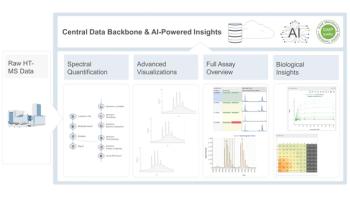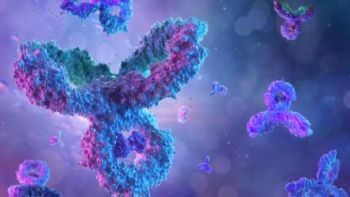
SESI-HRMS and GC-MS, LC-MS Compared for Exhaled Breath Analysis
ETHZ and Agroscope scientists tested a new means of analysis against secondary electrospray ionization (SESI) coupled to high-resolution-mass spectrometry (HRMS) for exhaled breath analysis.
Scientists from ETHZ and Agroscope in Zurich and Bern, Switzerland, tested a new means of analysis against secondary electrospray ionization (SESI) coupled to high-resolution-mass spectrometry (HRMS) for exhaled breath analysis compared to gas chromatography–mass spectrometry (GC–MS) and liquid chromatography–mass spectrometry (LC–MS). Their findings were later published in the Journal of Chromatography A (1).
One valuable technique for studying exhaled breath is on-line breath analysis using secondary electrospray ionization (SESI) coupled to high-resolution-mass spectrometry (HRMS). This technique is a non-destructive, real-time method that does not require sample preparation for assessing food safety, quality, or the region of origin of some specific products (2). This approach offers continuous monitoring due to real-time analysis, which is an advantage that has been applied in various studies. However, one limitation is the absence of a separation stage prior to ionization, such as chromatography. Using direct infusion techniques, such as SESI-HRMS in MS-mode, is not possible, as isomers would all yield the same m/z-ratio, thus making it a challenge to understand the underlying biology. One potential means of addressing this is collision-induced dissociation (CID), which is the process whereby an ion and a natural gas, such as helium, nitrogen, or argon, collide, causing fragmentation (3).
In this study, the exhaled breath of sixteen subjects was condensed and analyzed using dynamic headspace vacuum in-trap extraction gas chromatography-mass spectrometry (DHS-V-ITEX-GC–MS) and liquid chromatography coupled to mass spectrometry (LC–MS) using polar and reverse-phase conditions alongside a data-independent tandem mass spectrometry (MS2)-acquisition method based on multiple injections. The headspace sampling method used for GC–MS and an untargeted LC–MS acquisition scheme was used for the first time on exhaled breath condensate. Due to its analytical strengths, GC–MS provided robust annotation, though only a handful of compounds returned a match factor over 80. Further, more peaks were showed in the chromatogram for which tentative annotation could be obtained using a lower match factor.
Liquid chromatography–tandem mass spectrometry (LC–MS2) analysis using an untargeted acquisition method detected several features, though most of them were likely contaminants, as they did not match library compounds. In silico classifying the MS2 data showed that most features belonged to the amine and amino acid categories, partially covering the compound classes that SESI-MS is highly sensitive to. Both methods covered the m/z range of SESI-MS, though they both lacked either sensitivity for certain compound classes (as observed with GC–MS) or comparability with fragmentation libraries (as observed with LC-MS).
To improve the sensitivity of GC–MS, stricter control over subjects’ food intake before measurement could be implemented to minimize the influence of oral hygiene products. Additionally, the isolation window of the quadrupole in the MS2-acquisition method could be narrowed further. Though this may increase measurement time, this could reduce the risk of co-eluting species. If improved filtering techniques for fragment peaks are implemented, the quality and matching potential of obtained fragment spectra could be enhanced.
Though this method requires a certain intensity for the precursor feature, the scientists believe it can serve as a complementary method alongside LC–MS for further feature annotation. However, the team concluded that the best approach for high-quality feature annotation involves combining GC–MS, LC–MS, and on-line fragmentation techniques.
References
(1) Wüthrich, C.; Vadakkechira, A.; Fuchsmann, P.; Wacker, S.; Zenobi, R.; Giannoukos, S. Comparative Analysis of Feature Annotation Methods for SESI-HRMS in Exhaled Breath Analysis. J. Chromatogr. A 2024, 1734, 465296. DOI:
(2) Volatilomics. Fossiliontech 2024.
(3) Collision-Induced Dissociation. ScienceDirect 2024.
Newsletter
Join the global community of analytical scientists who trust LCGC for insights on the latest techniques, trends, and expert solutions in chromatography.





